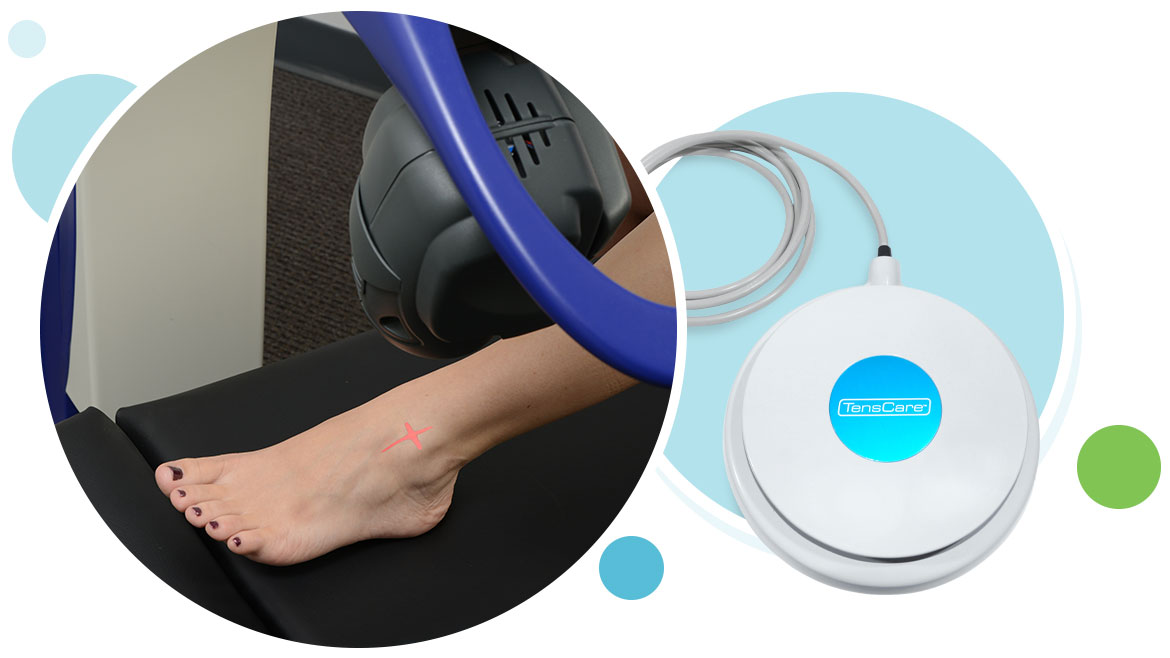Regenerative Medicine – innovative therapies harnessing the body’s healing processes
Multiple regenerative medicine therapies under one roof at our complete foot and ankle care facility.
We are proud providers of regenerative medicine, an innovative subset of medicine that focuses on harnessing the body’s natural healing processes to repair damaged tissues, reduce pain, and improve function. In podiatry, regenerative medicine has emerged as an alternative to traditional treatments for a wide range of conditions, including sports injuries, arthritis, chronic pain, neuropathy, and wound healing.
Click the tabs below to learn more about the types of on-site regenerative medicine we provide at our state of the art facilities in Chico and Redding.
MLS Laser Therapy for Chronic and Acute Pain – Manage Pain. Reduce Inflammation. Restore Mobility.
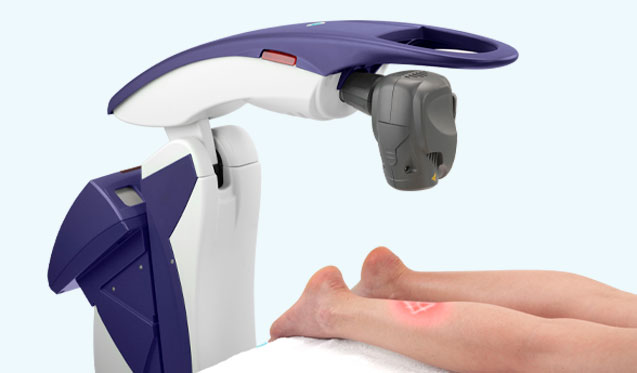
NFAS is thrilled to be a provider of MLS Laser Therapy for our patients which uses concentrated light energy to stimulate the body’s own healing process to minimize pain, inflammation, arthritis, and reduce recovery times. The MLS Therapy Laser is a Class IV Laser that has a unique pain-relieving effect, which can be dramatic – MLS provides 90% efficacy in reducing pain and inflammation. Many patients feel significantly better in just a few treatments. It’s also wonderful for arthritis and neuropathy. Postoperatively, MLS Laser Therapy accelerates healing by 40% while reducing the chance of scar tissue.
Watch this short video to learn more:
How does MLS Laser Therapy work?
Light energy enters the damaged cells and stimulates inter-cellular activity through ATP production. This reduces pain in the area and speeds recovery of the damaged cells. Once the cells recover, the healing process is complete.
What foot and ankle conditions does MLS Therapy help with?
MLS Laser Therapy is available for the following foot & ankle conditions:
- Arthritic pain
- Post-surgical swelling
- Heel pain
- Plantar fasciitis
- Achilles tendonitis
- Traumatic injuries
- Morton’s neuroma
- Sports injuries
- Repetitive motion injuries
- Sprains & Strains
- Occupational Injuries
- Bruising
- Wounds & Ulcers
- Neuropathy
What does laser therapy have over other forms of therapy?
It does not require the use of drugs or surgery, and it is quick and convenient.
Can it be used in conjunction with other forms of treatment?
Yes, MLS Laser Therapy is sometimes more effective when combined with other forms of therapy, including physical therapy, massage, soft tissue mobilization, electrotherapy, regenerative injections, and following surgery.
Is MLS Laser Therapy covered by insurance?
While MLS Laser Therapy is FDA cleared, treatments are not covered by insurance. However, when most patients consider that the MLS Laser Therapy has an 85-90% efficacy rate for pain, inflammation, and arthritis, and that the treatments are non-invasive, pain-free, and provide quick relief, it is an easy decision. With rising office call fees and out of pocket co-pays, MLS Laser Therapy is actually less costly than more invasive treatments covered by insurance.
Learn more here:
What is the cost of MLS Laser Therapy?
MLS Laser Therapy costs $75 for a single treatment; most protocols for specific conditions require 3-12 treatments. When purchased as a bundle of 3 or more treatments, the cost is $60 per treatment. We also offer a neuropathy package and an osteoarthritis package. Any office visits in which you see the doctor and are diagnosed to determine whether or not the treatment is right for you will result in a regular doctor visit fee, separate from the treatment cost.
Have more questions about MLS Laser Therapy? Contact our staff or book an appointment here.
Shockwave Therapy (EPAT): A Step Towards Pain-Free Feet

Shockwave therapy, or EPAT (Extracorporeal Pulse Activation Technology), is a non-invasive medical procedure that employs high-energy acoustic pressure waves that are delivered through the body and focused on the site of pain or injury. It stimulates the metabolism, enhances blood circulation, and accelerates the healing process, allowing damaged tissues to regenerate and recover. It is used to treat conditions associated with chronic pain and inflammation.
What foot and ankle conditions does Northstate F&AS use Shockwave Therapy for?
Northstate F&AS uses a Radial Shockwave Therapy device to treat the following foot and ankle conditions:
- Plantar Fasciitis: Shockwave therapy has proven effective in treating plantar fasciitis, a common condition causing heel pain. It stimulates healing in the inflamed plantar fascia, reducing pain and improving mobility.
- Achilles Tendonitis: This therapy can help patients with Achilles tendonitis by promoting tissue healing and reducing inflammation in the affected area.
- Calcific Tendinopathy: Shockwave therapy can break down calcium deposits in tendons, restoring function and reducing pain in conditions like calcific tendinopathy.
- Other Foot Conditions: While primarily used for the conditions mentioned above, shockwave therapy may also benefit patients with other conditions such as neuromas.
What are the benefits of Shockwave Therapy?
There are multiple benefits of Shockwave Therapy including:
- Non-Invasive: Shockwave therapy is a non-surgical procedure, reducing the risks associated with surgery and anesthesia.
- Speedy Recovery: Unlike surgery, which often requires extended recovery periods, patients can typically resume their normal activities shortly after Shockwave therapy.
- High Success Rates: Shockwave therapy has shown significant success in treating common foot conditions, including plantar fasciitis and Achilles tendonitis.
- Minimal side effects: While some discomfort and swelling may occur post-treatment, the side effects are generally mild and temporary.
Have more questions about Shockwave therapy? Contact our staff or book an appointment here.
Promoting tissue repair and regeneration through Platelet-Rich Plasma (PRP) Therapy
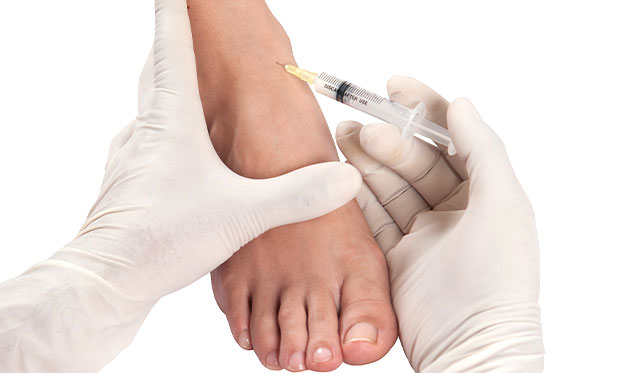
Platelet-Rich Plasma (PRP) Therapy utilizes the body’s natural healing abilities to promote tissue repair and regeneration. The process begins by drawing a small amount of the patient’s blood, which is then centrifuged to separate the platelets and plasma from other blood components. The resulting PRP is rich in growth factors and bioactive proteins that play a crucial role in tissue repair for the following foot and ankle conditions.
- Plantar Fasciitis: PRP injections can help alleviate the pain and inflammation associated with plantar fasciitis, a condition characterized by pain in the heel and arch of the foot.
- Achilles Tendonitis: PRP therapy is effective in treating Achilles tendonitis, a painful condition affecting the Achilles tendon, which connects the calf muscles to the heel bone.
- Ankle Sprains: For patients with recurrent ankle sprains or chronic instability, PRP injections can strengthen the damaged ligaments and promote faster healing.
- Osteoarthritis: PRP therapy can be used in the management of osteoarthritis in the foot and ankle joints, reducing pain and improving joint function.
- Wound Healing: PRP can also aid in chronic wound healing, particularly in patients with diabetes, where slow-healing foot ulcers are a common concern.
What are the benefits of PRP therapy?
There are multiple benefits of PRP therapy including:
- Minimally Invasive: PRP injections are minimally invasive and can be performed in an outpatient setting, reducing the risk of infection and complications.
- Natural Healing: PRP utilizes the patient’s own blood, minimizing the risk of allergic reactions or rejection.
- Speedy Recovery: Patients often experience faster recovery times when PRP therapy is integrated into their treatment plan.
- Reduced Pain: PRP injections can alleviate pain, allowing patients to resume their daily activities more comfortably.
- Long-lasting Results: PRP therapy not only provides relief but can also promote long-term healing and tissue regeneration.
What should I expect?
If you are considering PRP therapy for a foot or ankle condition, here is what you can expect during the treatment process:
- Consultation: Your podiatrist will evaluate your condition and discuss whether PRP therapy is suitable for you.
- Blood Draw: A small amount of your blood will be drawn and processed to create PRP.
- Injection: The PRP is injected into the affected area under local anesthesia.
- Recovery: After the procedure, you may experience mild discomfort, swelling, or bruising, which typically subsides within a few days.
- Follow-up: Your podiatrist will schedule follow-up appointments to monitor your progress and adjust the treatment plan if necessary.
Have more questions about PRP therapy? Contact our staff or book an appointment here.
Promoting tissue repair, regeneration, and anti-inflammatory processes with Amniotic injections
Amniotic injections, sometimes referred to as amniotic tissue injections, are derived from the amniotic membrane and amniotic fluid surrounding a developing fetus during pregnancy. This tissue is a rich source of regenerative factors, growth factors, and cytokines, which play a crucial role in tissue repair, regeneration, and anti-inflammatory processes. These injections utilize the natural healing properties of amniotic tissue to promote healing in the following foot and ankle conditions:
- Plantar Fasciitis: Amniotic injections can help alleviate the pain and inflammation associated with plantar fasciitis, a condition characterized by pain in the heel and arch of the foot.
- Tendonitis: They can be used to treat various forms of tendonitis, such as Achilles tendonitis or peroneal tendonitis.
- Arthritis: Amniotic injections can provide relief to patients suffering from osteoarthritis or rheumatoid arthritis in the foot and ankle joints.
- Ligament Injuries: For patients with ligament injuries or chronic instability, Amniotic injections can promote tissue repair and support.
- Wound Healing: They can be employed in the management of slow-healing wounds and ulcers, a common concern for patients with diabetes.
What are the benefits of Amniotic injections?
There are multiple benefits of Amniotic injections including:
- Regenerative Potential: Amniotic injections are packed with regenerative factors that can stimulate tissue repair and regeneration, facilitating faster healing.
- Anti-Inflammatory: These injections have potent anti-inflammatory properties, reducing pain and swelling in the affected area.
- Minimally Invasive: Like PRP therapy, Amniotic injections are minimally invasive and can be performed in an outpatient setting.
- Reduced Risk of Infection: Using processed Amniotic tissue eliminates the risk of allergic reactions or infections that may arise from donor tissue.
- Improved Outcomes: Patients often experience quicker recovery times and long-lasting relief from pain and discomfort.
What should I expect?
If you are considering Amniotic injections for your foot or ankle condition, here’s an overview of what to expect during the treatment process:
- Consultation: Your podiatrist will evaluate your condition and determine if Amniotic injections are a suitable option for you.
- Injection: The amniotic tissue product is injected into the affected area, often under local anesthesia.
- Recovery: Some patients may experience mild discomfort or swelling, which typically resolves within a few days.
- Follow-up: Your podiatrist will schedule follow-up appointments to monitor your progress and make any necessary adjustments to your treatment plan.
Have more questions about Amniotic injections therapy? Contact our staff or book an appointment here.
A Pioneering New Therapy For Wart Skin Conditions
Say goodbye to stubborn skin conditions. Say hello to Swift.
We are proud providers of Swift, a pioneering new skin therapy which uses microwave energy to rapidly increase tissue temperatures, targeting the root cause of various persistent skin conditions. Depending on how a patient responds to treatment, many issues can be resolved with 2-3 treatments, with gaps of 4 weeks between treatments.
What is Swift®?
Swift is an innovative skin therapy, developed in the UK, which is now available in the United States. Swift uses microwave energy which is delivered through a special probe applied to the skin to treat the affected tissue.
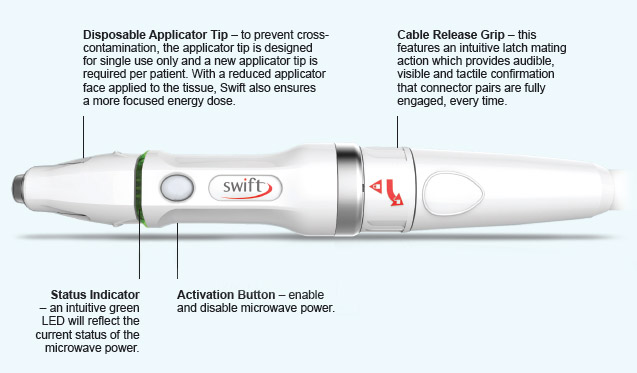
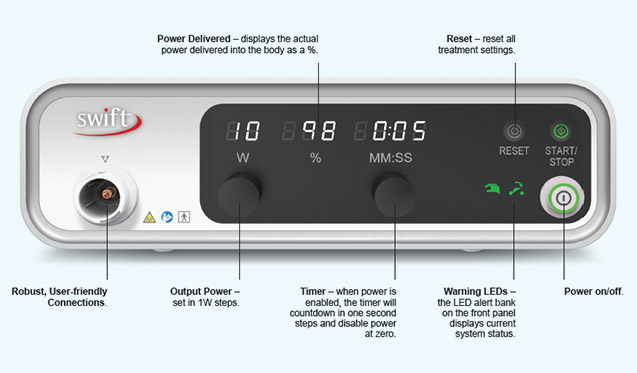
Does it hurt?
Like many treatments for skin lesions, some minor discomfort may be experienced. Pain levels vary from person to person but most people undergoing Swift liken it to a pain similar to an injection or a scratch, lasting 2 – 3 seconds then quickly subsiding.
What can I do after treatment?
In some cases the treated area may feel sore but will not prevent you undertaking normal daily activities.
How many treatments will I need?
This is dependent on how you respond to treatment. We are seeing most lesions resolved with 2-3 treatments, with gaps of 4 weeks between treatments. Your Clinician will be able to discuss this with you in more detail.
Can anyone receive this treatment?
With a few exceptions, most people with skin lesions would be able to have this treatment. Your Podiatrist or Dermatologist will carry out an assessment prior to treatment and be able to advise you on this.
Have more questions about our treatment processes? Contact our friendly staff or book an appointment here.

